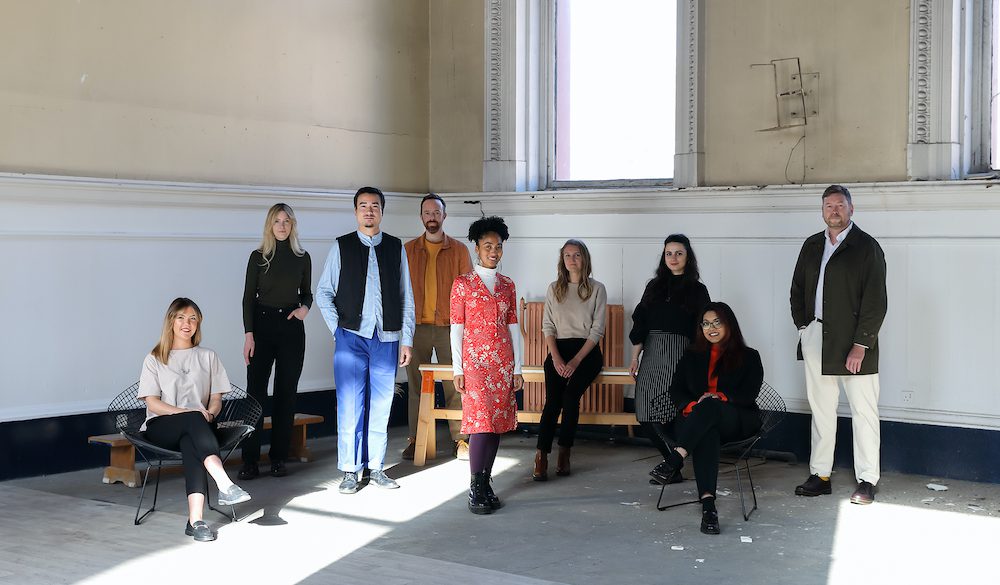20 April 2023 — Announcement
A Fragile Correspondence: New Trailer
How can a closer relationship between land and language help architecture be more attuned to the environment in which it operates?
Highlighting cultures and languages that have a close affinity with the landscapes of Scotland, A Fragile Correspondence explores alternative perspectives and new approaches to the challenges of the worldwide climate emergency.
Taking inspiration from The Laboratory of the Future, the theme of the Biennale Architettura 2023, and curated by Scottish-Ghanian architect Lesley Lokko, writers, artists and architects, in correspondence with these landscapes, explore issues distinctly rooted in place but with global relevance to the cultural, ecological and climatic issues that we face.
Our journey across Scotland
From the forests around Loch Ness, the seashore of the Orkney archipelago, and the industrialised remnants of the Ravenscraig steelworks, the project takes us on a journey through three Scottish landscapes across the Highlands, Islands and Lowlands.
In Loch Ness with the Highlands as the genesis for modern, romanticised world tourism, the exhibition explores how internationalised capital and commercial extraction affects the biodiversity, cultural identity and environmental sustainability of the land in a local context.
In Orkney the work examines how the local population have for centuries negotiated the forces of nature, in particular the dynamic and powerful sea, as an example of an evolving relationship between people and place anchored in a deep understanding of the natural environment and steeped in community resilience.
At Ravenscraig, in the Lowlands, the exhibition presents the contemporary landscape, often unseen as a moment between somewhere and nowhere, as a place of authenticity and a resurgent natural landscape.
Through these creative explorations, and by proposing a new lexicon of terms and definitions, the exhibition looks to see the potential in possible futures that sensitively work in correspondence with the land rather than simply upon it.
Visitor experience
Situated adjacent to the dock with open views to the canal and city beyond, the exhibition is arranged into four distinct areas with visitors being gently guided through the landscapes of Loch Ness, Orkney, and Ravenscraig before reaching the reading room and project lexicon.
Each landscape is introduced through chosen words and language with a bespoke research wall of archive and contemporary imagery, printed materials and artefacts. Large-scale monitors display specially commissioned films presenting the landscapes through poetic audio and moving image with contributions from the curatorial teams and exhibition participants.
The creative responses to the questions posed by A Fragile Correspondence are displayed throughout the exhibition and include artworks, photography, sculpture, installation work, film, audio and sound. Materials used within the exhibition’s presentation reflect aspects of the various landscapes in focus with timber supporting the work exploring Loch Ness, straw and a palette of natural materials helping to frame Orkney, and an emphasis on metalwork and the reflection of heat contextualising Ravenscraig.
A Fragile Correspondence culminates in the reading room which hosts the project lexicon and a digital interface where visitors are invited to interact with the text and resources to contribute their own words and descriptions for place, land and landscapes that are important to them.
Watch the Trailer
One month before the exhibition opens to the public, we are delighted to share a short film by Simon Forsythe, Lateral North, with project participants Raghnaid Sandilands, Dr Amanda Thomson, Andy Summers, Aoife Nolan and Neil McGuire on the Scotland + Venice website that reflect on the exhibition’s themes.
Commissioned by the Scotland + Venice partnership and curated by the Architecture Fringe, -ism magazine, and /other, A Fragile Correspondence will be on show 20 May – 26 November 2023 at _docks_cantieri_cucchini (Cantieri Cucchini, S. Pietro di Castello, 40, 30122) situated between the Giardini and Arsenale.


